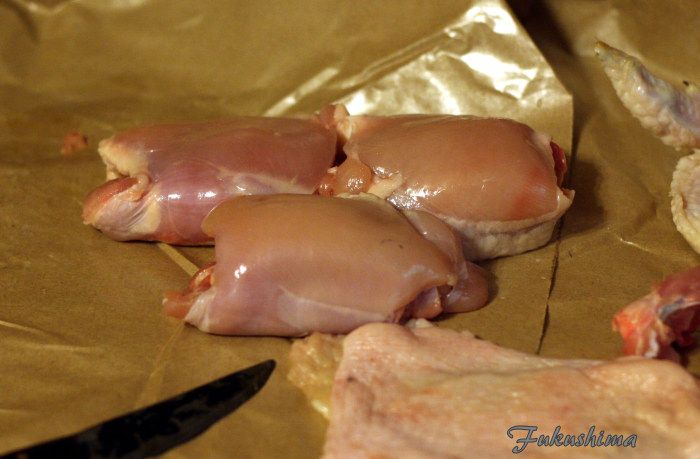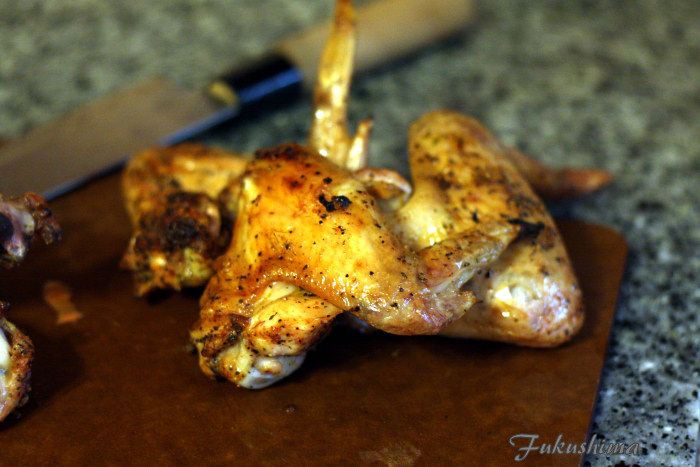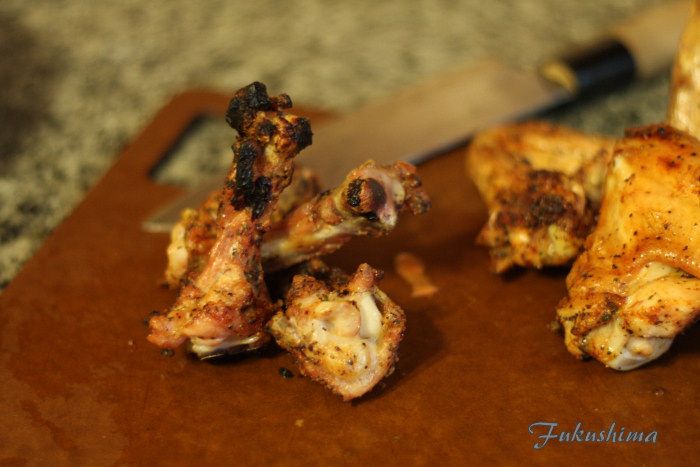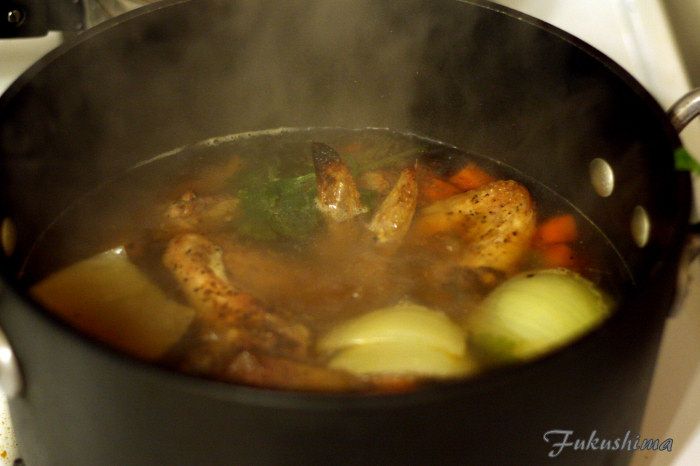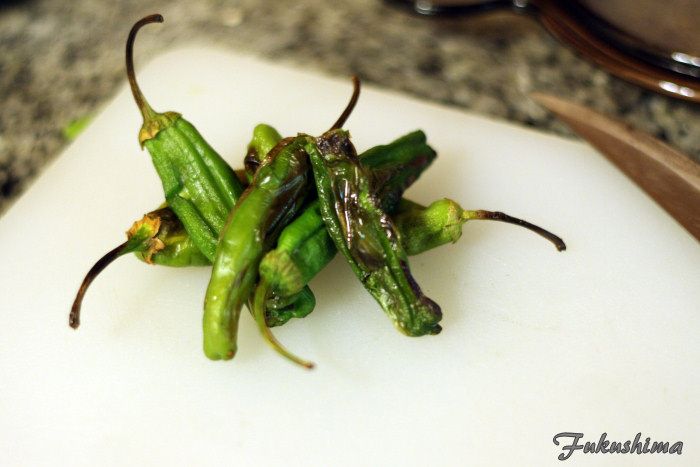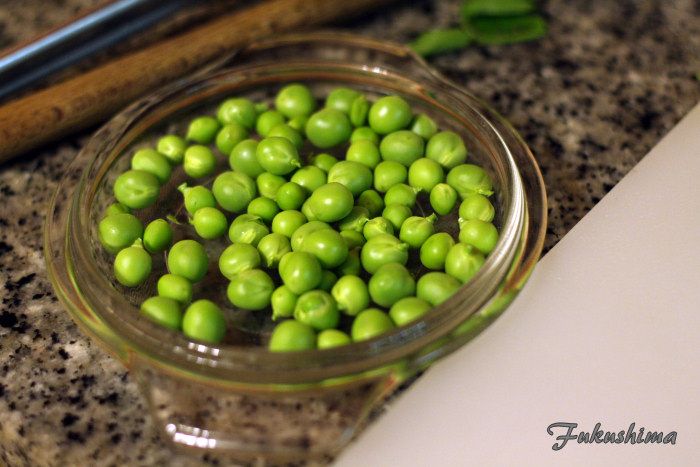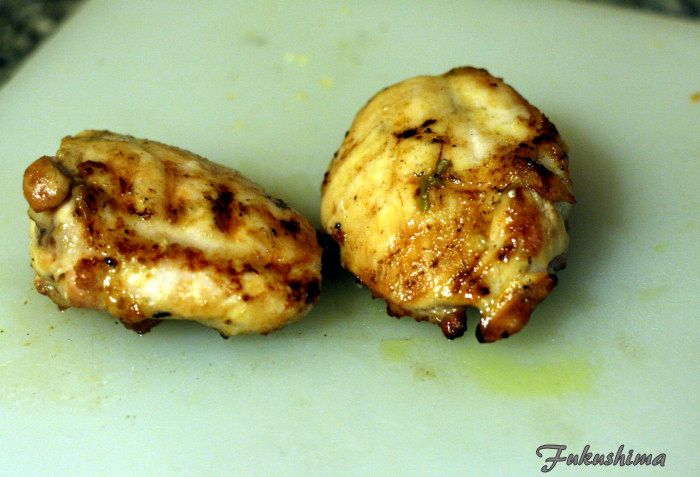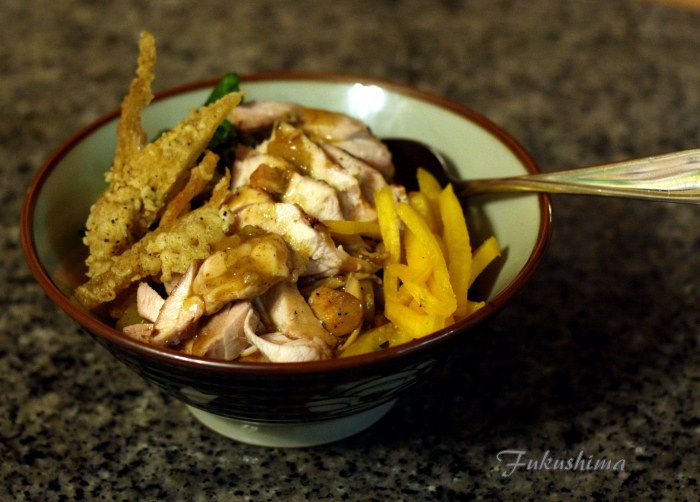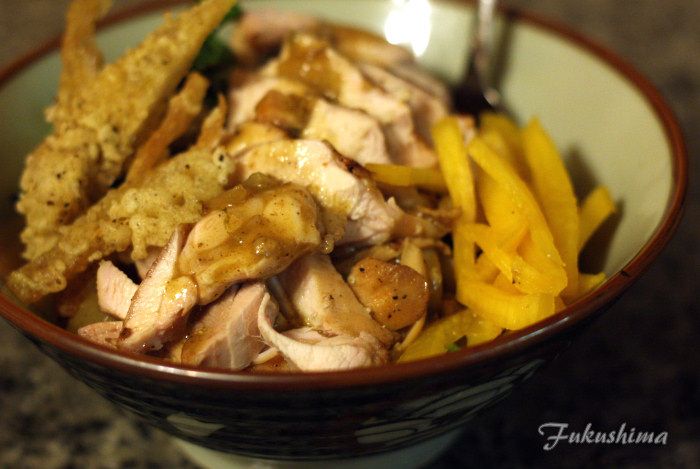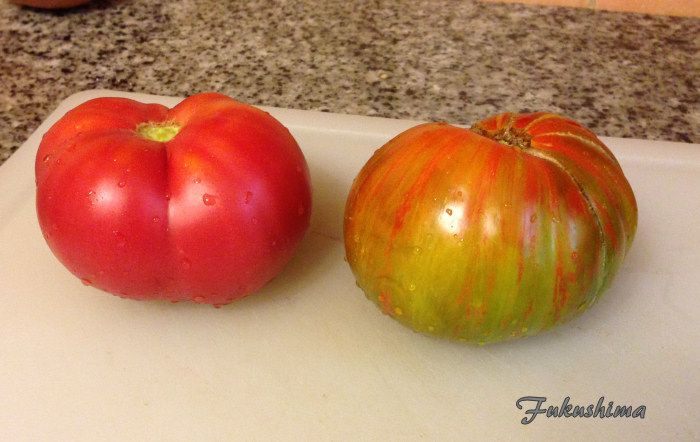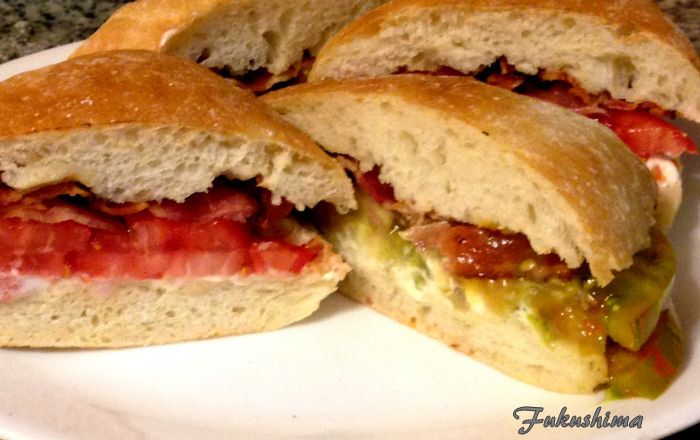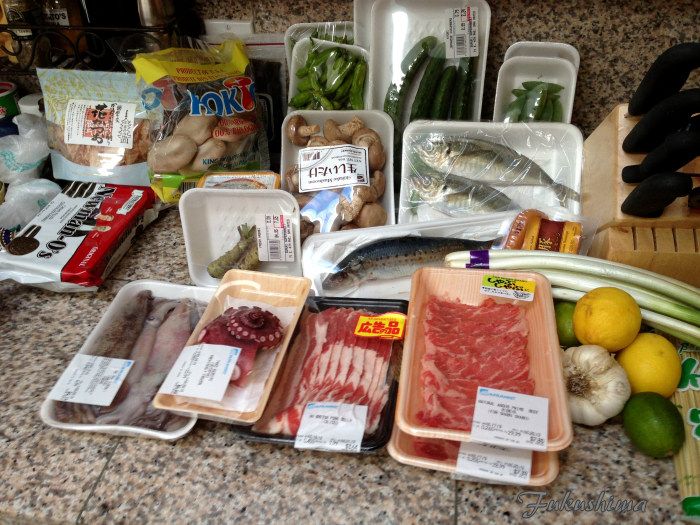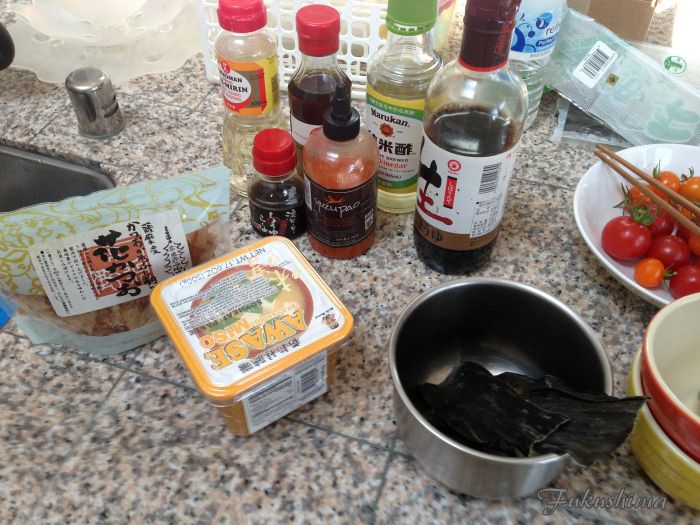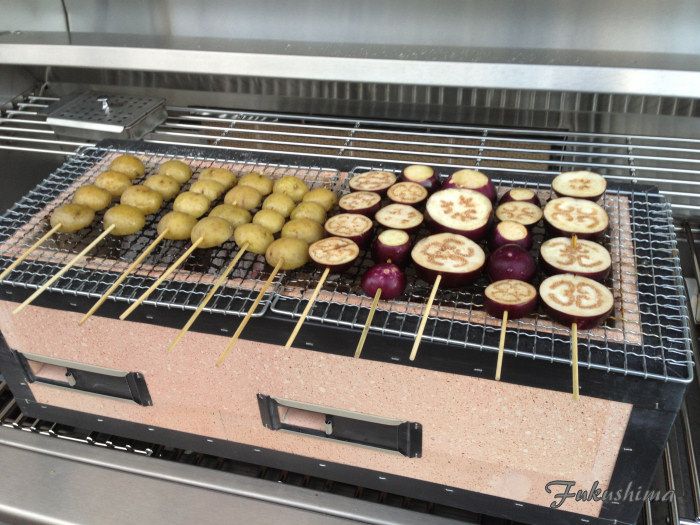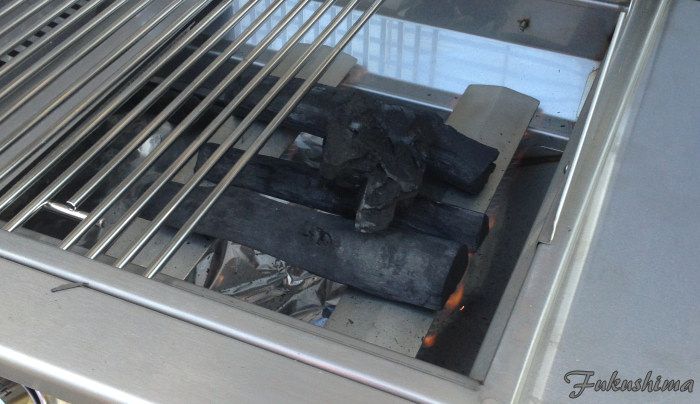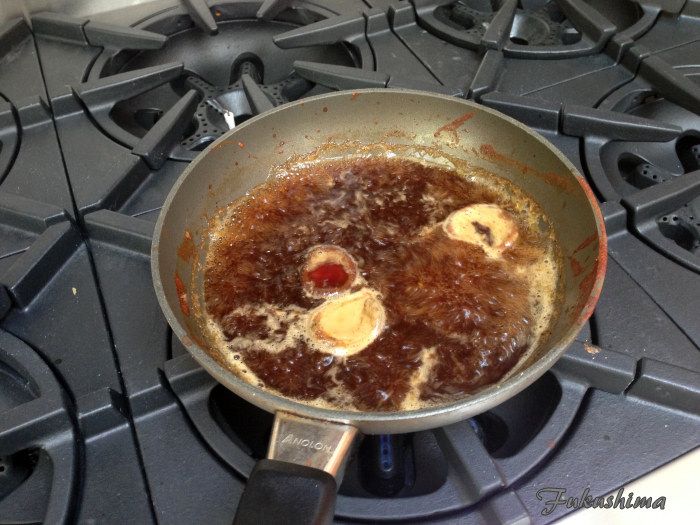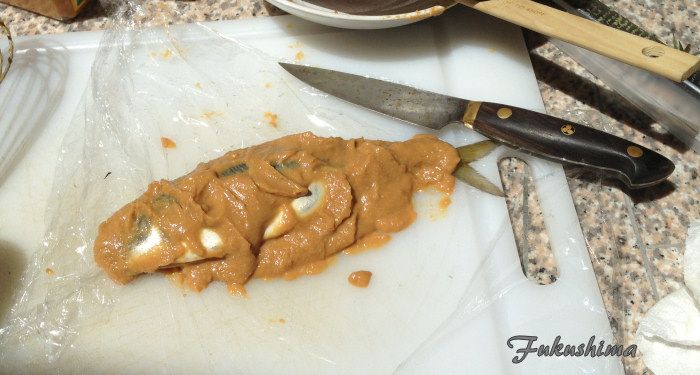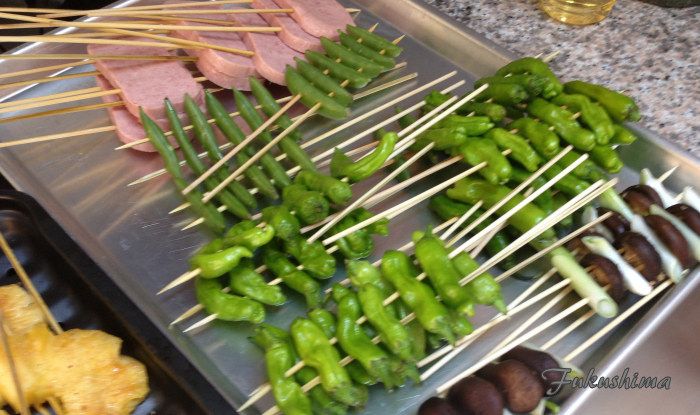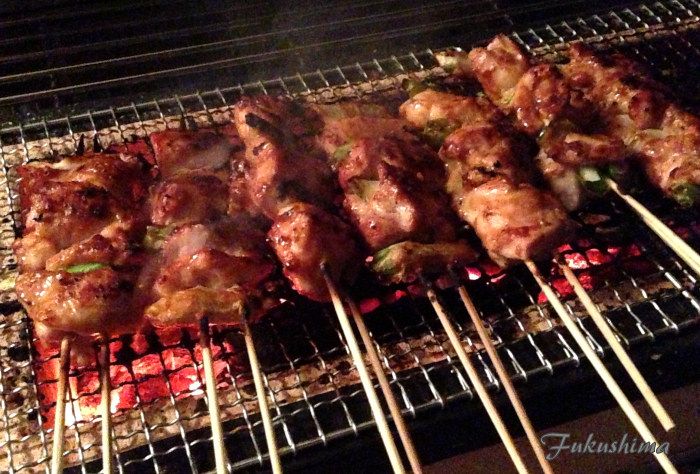The first thing, was to get a little meat preparation done, so I could create a flavorful base for my curry sauce. Sure, the simplest thing would have been to toss a couple of S&B curry blocks into some water, but, well, blaaaa!
Skinned some chicken thighs, anyone who does competition chicken BBQ would recognize this unappetizing stuff. Oddly trimmed and naked chicken thighs and scraped skin. Yum!
Skinned, trimmed and defatted
Defatted and trimmed
There were bones and wings, these were to be grilled until browned. Now, I know that many folks think, why would you use wings for curry stock, because, wings are densely packed with connective tissue, the dark meat lends flavor, and with small mass and large surface area, it is the fastest and most useful cut for making stock. The gelatin release alone, makes these ideal for uses where a highly rendered stock is desired (such as in soup dumplings).
Must. Not. Eat.
Roasty bones
I would have liked a little more color, but, I ran out of charcoal, and time, so this had to do. The bones had plenty of char and smoke, as did the wings, which, to be honest, were hard not to eat. These were fully seasoned, having gotten a rub of Simply Marvelous Sweet and Spicy before hitting the fire. Then into the stock pot.
Chicken Soup
Just three cups of water, the three wings and three roasted thigh bones, then a sheet of konbu, some cilantro, onions, carrots, shoyu and one clove of garlic. I added a pinch of salt to the stock, this is really a necessity. After a 20 minute steep, the konbu was removed and a vigorous boil was started. I reduced it to a rolling simmer, adding water to maintain 3 cups total liquid. After 15 minutes, I removed one cup, to fortify the water for the barley. Pearl barley was to be the starch, and it requires a 45 minute boil for the 2/3 cup of dried barley I had. With two cups water and one cup stock, the barley was boiled to al dente, and chilled for later. The stock took two hours, then was chilled and defatted.
Grilled Shishito Peppers
The peppers were grilled, to add a bitter component to the final dish. Japanese style curry is a sweet/piquant affair, and the takuan that traditionally accompanies the dish is also sweet. These peppers have a mild, actually non-existent heat, but, a great bitter/herbal note.
English Peas
I found some local English peas, which were a surprise in the store, these are so much better than frozen or canned. And Japanese curry really needs them. I was happy to get these, as they add a much needed texture that canned or frozen just lacks. I added these about 10 minutes before serving, just to heat through, the stove wasn't even on.
Grilled over oak lump and apple wood
The chicken was brined in a simple and light brine consisting of 3 cups water, 1 teaspoon of sea salt and 1 tablespoon of maple sugar. This was allowed to brine for 4 hours. It was far less salty than most brined chickens, not even as salty as a store bought chicken. The flavor of the maple was there, my plan for a Vermont Curry knock-off was Golden (you would have to be a fan of S&B curry to get that).
The finished curry sauce, with peas, potatoes, carrots
I put the chicken from the wings back into the sauce, and heated through, adding some cornstarch to thicken. The peas were added last. Slicing of the chicken from the grill and final assembly...oh, I forgot to mention, I made a quick tempura batter from 1/2 cup ice water, 1/8 cup each of AP flour and cornstarch, and fried the skins, strips of skin actually. I ended up only using one skin, I mean, who needs all that fat, and tasty, tasty, fried skin. The bowl was filled with the barley, which I reheated with some finely diced onion and celery, as well as some left over chicken stock.
Garnished with tempura skin, takuan, grilled peppers
A note about barley, as you are probably wondering about that. Although the Japanese diet is nearly synonymous with rice, and for most these days, sushi rice, in fact, rice has been a pricey commodity, and was not always available to all of the people in Japan. The milled and polished rice was a luxury for many, and impossible luxury for quite a few. The use of barley, either rolled or milled, was common for the lower classes in Japan. Many dishes, such as barley and rice, or barley tea survive in modern Japanese diets, but, at one time, barley was the staple for the poor.
de Mille moment
In fact, barley adds a wonderful toothsome texture to this dish. I have always loved the addition of barley to soups and rice, and this 'throw back' was quite welcome. I try to add dimensions to every element of a dish, and barley work beautifully for this. It has a very low glycemic index in the body. It has been shown to aid in lowering blood pressure, lowering serum lipids and aiding in dietary control. Not at all a bad option.
Yeah, I know, that is fried chicken skin on top, probably negates the barley benefits completely.
